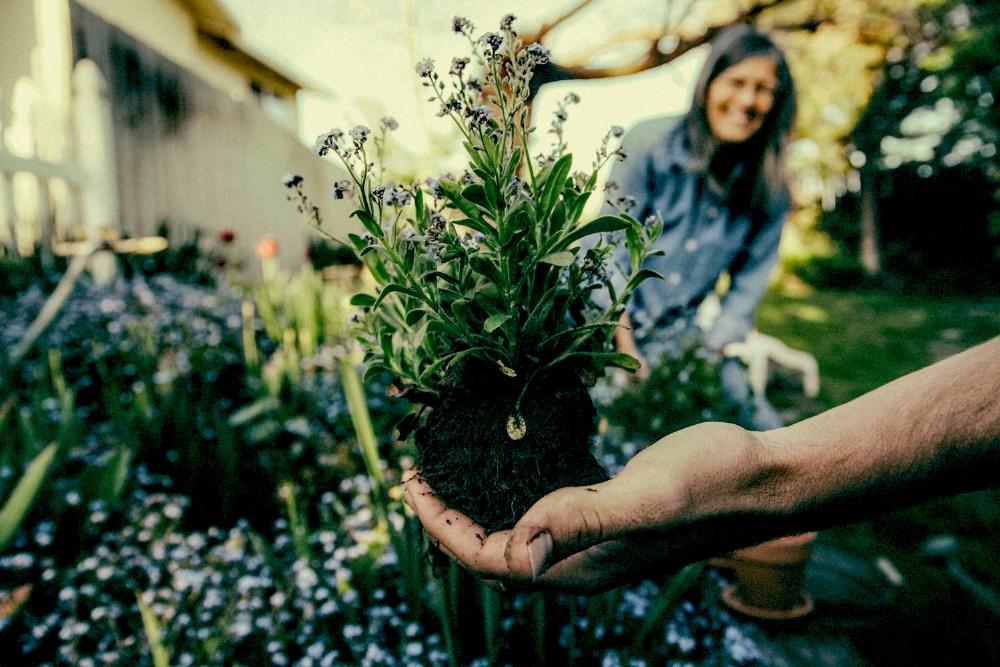
Following the sustainability path goes beyond just composting. How to start a sustainable garden implies combining different new practices around the garden to get the most out of the soil without harming the planet. It’s just about having a plan, thinking ahead, so you can successfully include sustainable practices in your garden.
Whether you grow just plants or food for your family, it’s better to turn to organic growing methods and avoid chemicals which will ultimately end up on your dinner table. Follow these creative ideas to garden more sustainably:
One of the first steps on how to start a sustainable garden is using compost. Making compost is one of the greenest techniques you can apply in eco-friendly gardening. Composting is about turning your food scraps into fresh soil: sounds super green, right? In fact,it replaces synthetic fertilizers and keeps moisture in the soil, apart from reducing waste. Well, be sure you nurture your plants with compost and you’ll get healthier and fresher plants and veggies. Avoid artificial fertilizers as composted material is an organic fertilizer that provides minerals that enrich the soil for plants and vegetables plus it’s a great way to reduce waste.
Dead plants and roots, wood chips, grass clippings (apart from food scraps and manure) are totally compostable materials. Do some research about composting and start now.
The good thing is that you can start right now! Check this article: How to Start Composting? Everything You Need To Know About It
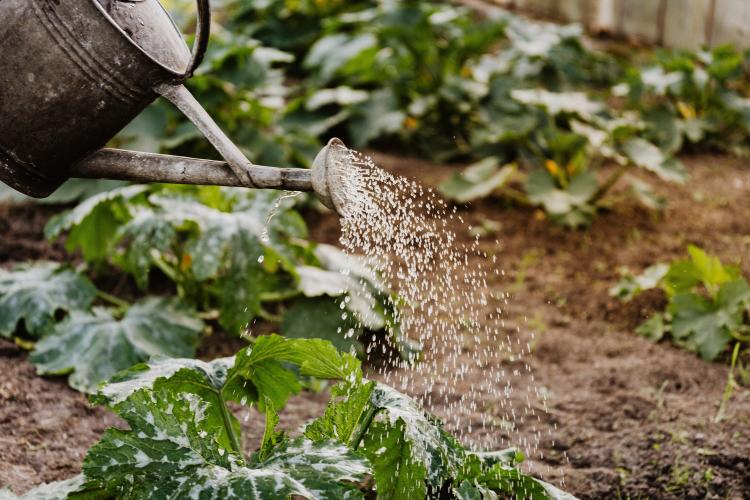
Rule of thumb on how to start a sustainable garden: our garden doesn’t need water EVERY DAY, you’ll just realize when your plants need it.
The most important natural resource we have on the planet can disappear. Actually, we are experiencing a water crisis in the world. Try irrigation twice a week and be sure you recycle water when it’s not needed. You can collect and save rainwater by simply placing a big barrel or any container outdoors. Even better, think about collecting the unused water in the shower while it warms up.
For big areas such as the lawn, try to use low-angle sprays which reduce water loss due to evaporation. Oscillating sprinklers, on the contrary, put off at least one inch of water per hour. That means watering your lawn for an hour, once a week.
For gardens, choose drip irrigation or hoses. Try to get rid of hard dry surfaces so as to allow water to be absorbed by the soil.
To reduce environmental impact, replace your gas-powered lawn mower by an electric one or ,even greener, a push mower.You should also consider pulling weeds by hand, it’s good exercise! Shovels, rakes, hoes, everything would be a more eco-friendly gardening option rather than turning on a machine that releases harmful gases into the air.
You may be interested on: How to choose the best Rainwater Collector for you and its Benefits
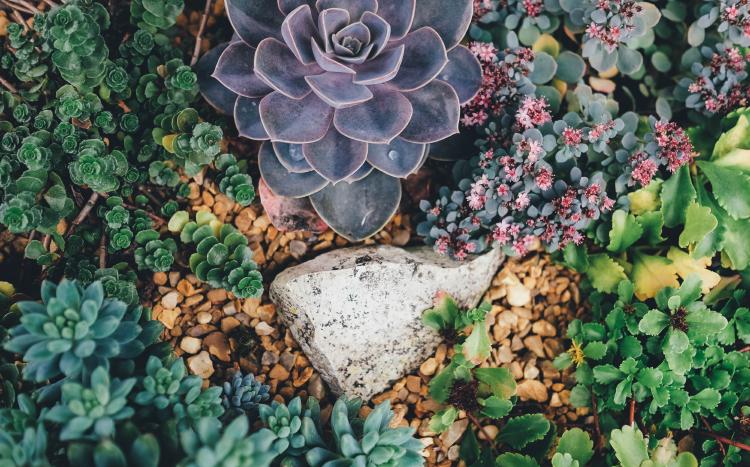
How to start a sustainable garden protecting the natives: native plants are those typical of your area. This means that they adjust better to environmental conditions because they grow in their natural (“native”) region. Rainfall, soil and climate play an important role here as these native plants are perfectly suited to all these factors. All of this translates into less use of water, less mowing and less effort to allow them to thrive.
According to your region’s climate conditions, try to choose plants that better tolerate droughts,rainfall and floods. Bear in mind that by choosing native plants you’re providing food and shelter to local birds and insects as well.
The same with veggies, grow vegetables according to the season and the soil in your region.This way, you can have control over the amount of water you’ll need and implies less effort and less additives. Totally smart choice. Ask local gardeners about the best native plants to grow in your garden.
I also think trees are a must to have in the garden. Trees help store carbon that goes directly to the soil. Plus, they help cool your house during scorching summer days.
Placing your plants strategically is another eco-friendly gardening practice. Remember that there are sun-loving and shade-loving plants. Some of them need more water than others. Keep in mind all these factors before you start sowing seeds.
Place your shade-loving plants near the tallest ones or near trees. Sun-loving plants will thrive in lighter areas in the garden. Plants that need more water will love being near the sprinkler or in moist areas.
Designing and organizing is essential when you are not sure about how to start a sustainable garden.
An interesting example is what it’s called Three Sisters planting. Native Americans used to apply this technique in the past so it’s time for some history. Three plants to include: beans, squash and corn. These three plants thrive together because they help each other.
Corn allows beans to climb over the tall stalks thus receiving sunlight and plenty of air. Beans are great providers of nitrogen-fertilizers for the soil, thus stabilizing the tall, shallow-rooted corn stalks. Squash leaves provide shade on the ground to help regulate soil moisture and prevent weed.
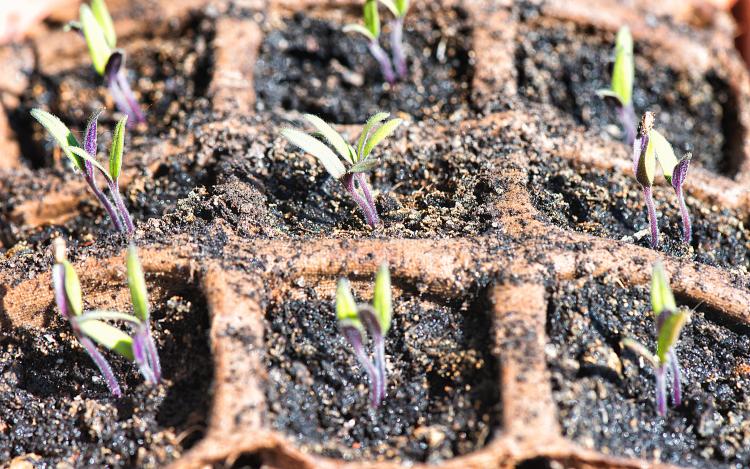
Another main principle on how to start a sustainable garden is keeping a rich soil. The fertility of the soil and conservation of water should be your main goals for a greener garden. For this, consider adding mulch in your lawn or garden. Mulching is about creating a protective layer out of grass clippings, cardboard, wood chips, compost and even worms. It keeps the moisture in the soil, thus reducing water loss and it provides food for the microorganisms living in the soil. These important microbes are great fertilizers that keep your garden fertile. So,consider adding this natural carpet on the soil to keep it moist,structured and healthy for plant growing, completely naturally.

Another reasonable idea on how to start a sustainable garden is not having to buy seeds every year. For this, save the seeds after your flowers have matured. Before they dry out, they will provide you with seeds to grow in the next season. The easiest you can get are tomatoes, beans, peppers and peas seeds.
Wildflowers are a good option as they reseed by themselves thus you’ll get a beautiful and colorful garden effortlessly.
To get rid of weeds, just kneel down and pull them out! Old-fashioned but eco friendly! All the chemicals you add to your soil will just pollute the environment and your own food production from the garden. But, how to start a sustainable garden without extra help to control pests?
There are organic options you can choose to avoid the use of pesticides and herbicides.
Consider companion planting. Placing plants and herbs strategically makes plants help each other out by encouraging growth, repelling pests, and attracting beneficial birds and insects. Plant defenses naturally protect the surrounding plants preventing pests and diseases.
For example, plant basil next to a tomato plant. It will repel flies and worms. Or place beans next to an asparagus plant to repel asparagus beetles. Finally, a companion plant for onions is a leek plant, they help repel onion flies.
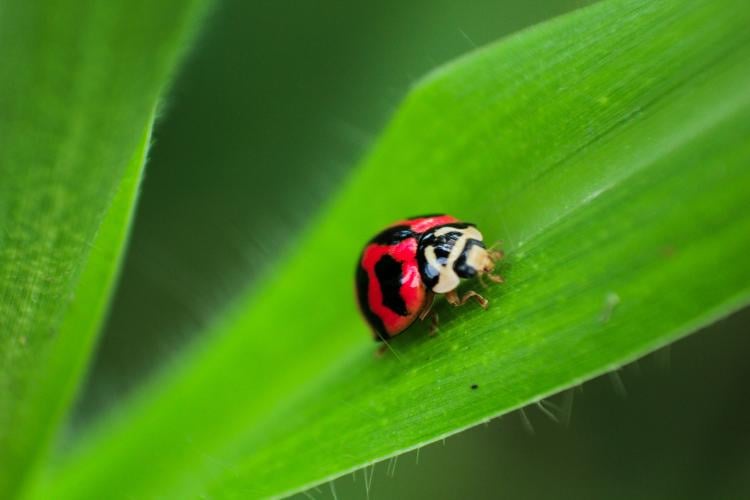
Insects are nature's solution for pest control. They love eating mites, flying pests, caterpillars and aphids and, important to know, they don’t harm people or pets.
Ladybugs, these pretty and good-luck insects, eat aphids. Aphids kill plants by sucking its juice. So, you can buy ladybugs or just attract them with their favorite food: dill, coriander or yarrow.
Another great helper to eliminate pests are toads. They all eat creeping, crawling and flying pests like beetles, snails, flies and ants that destroy your plants. You should invite toads by placing wet leaves in an isolated hole in the soil. You’ll see how productive they are during the night.
Hover flies are also good helpers for any destructive pest around the garden. They resemble wasps or bees but they don’t bite. These flower flies are effective at controlling aphids in your plants.
You can plant flowers and herbs to attract them as they love fragrant plants. Think about having oregano, sweet alyssum, parsley and garlic in your garden to attract these awesome pest controllers and contribute to an eco-friendly garden.
There’s no need to buy a new pot every time. Eco friendly gardening is about SAVING and REUSING.Try to use anything you have at home to make your own pots or flower beds. From containers to bamboo or wooden boxes, everything will do. There are plenty of DIY web pages where you can find innovative and creative tips on how to start your own sustainable garden without harming the environment. Avoid plastics, use wood instead. Try making ditches to place flowers and plants according to type and treatment requirements.

Keep in mind that our Mother Nature is wise. Everything that lives and dies in your garden goes back to the soil to enrich it. So take advantage of this gift and don’t throw anything away. From grass clippings or wood chips to dead or dried plants, put all on your compost bin or pile. It’s one of the best tips for waste reduction.
Pots can be also reused or sent to a recycle center in your area. The idea here is not disposing of what can then be a useful soil nutrient.
Remember all these tips on how to start a sustainable garden to avoid harming the environment. It’s not essential you follow ALL of them, all these tips depend upon each other. So, choosing two or three of them will definitely make a difference.From avoiding chemicals to saving water, they all contribute to a greener world and healthier food on your table. Take action!
Find more sustainable practices here: How To Design a Sustainable Home